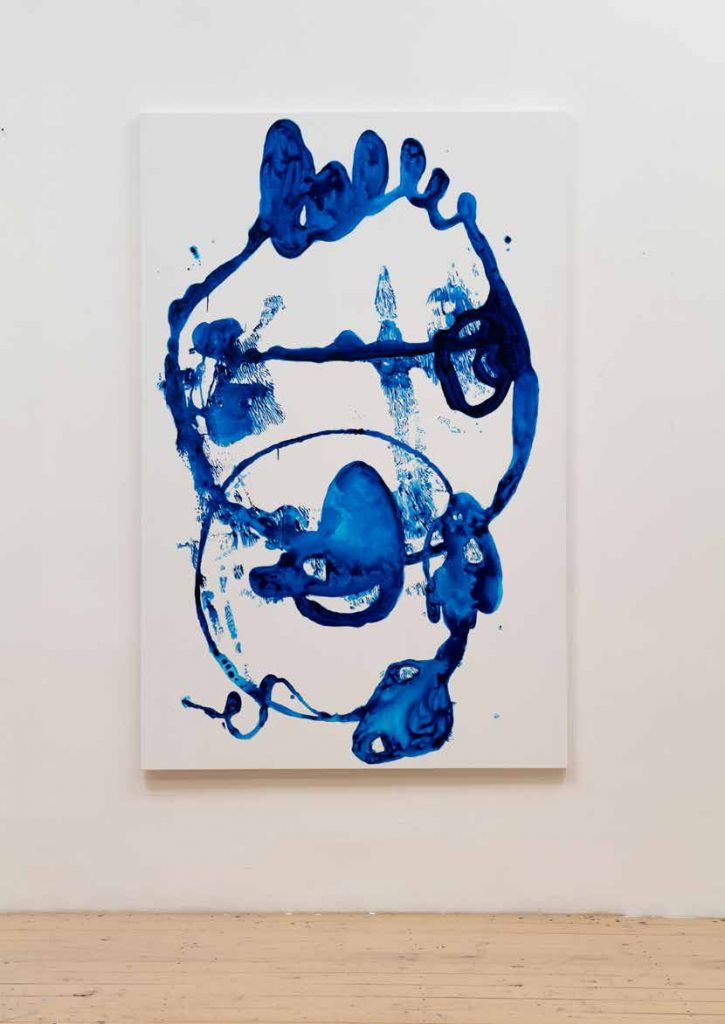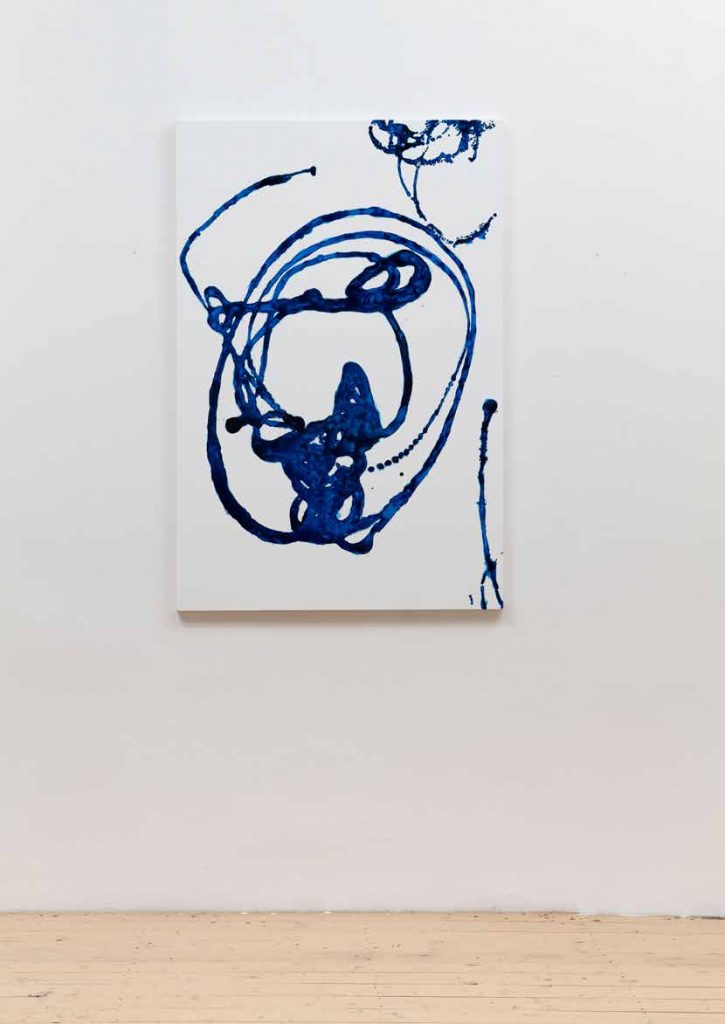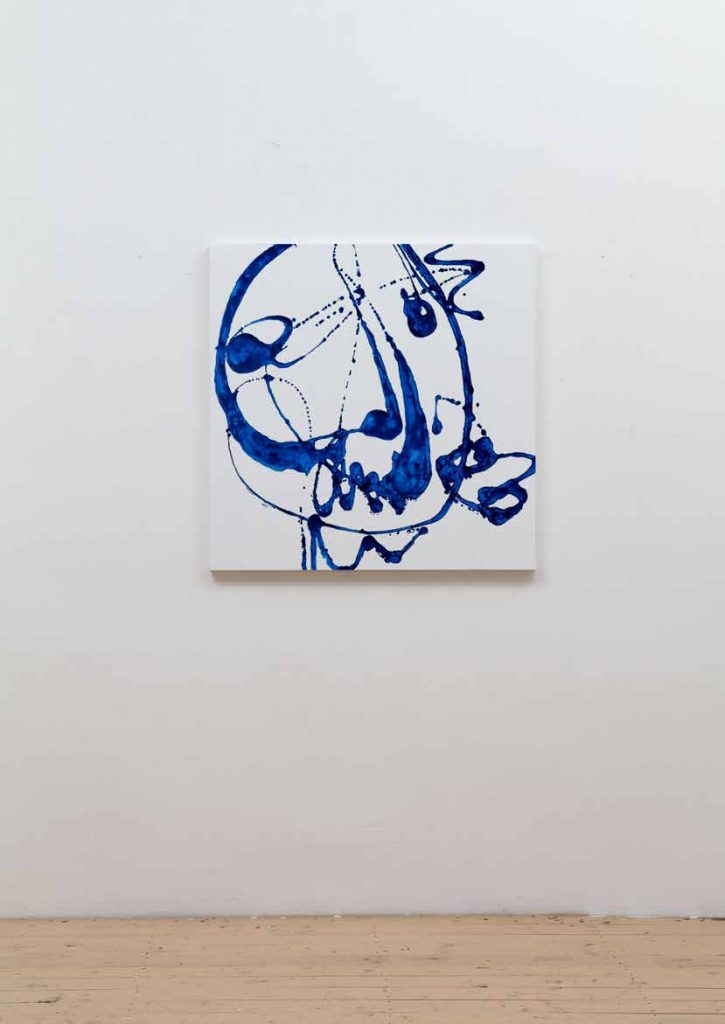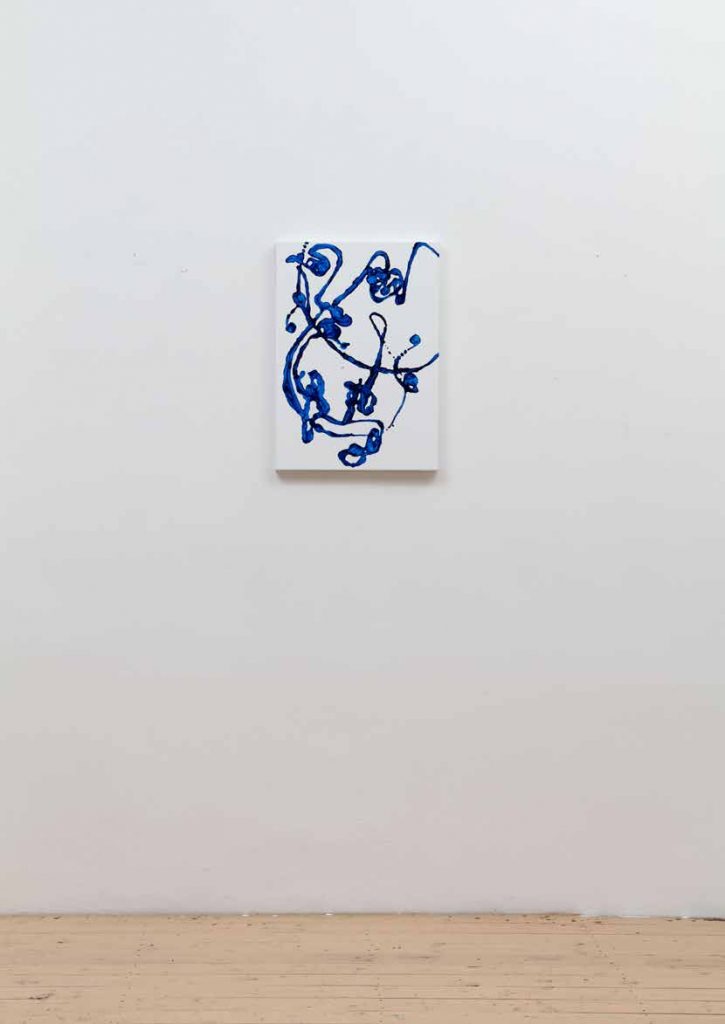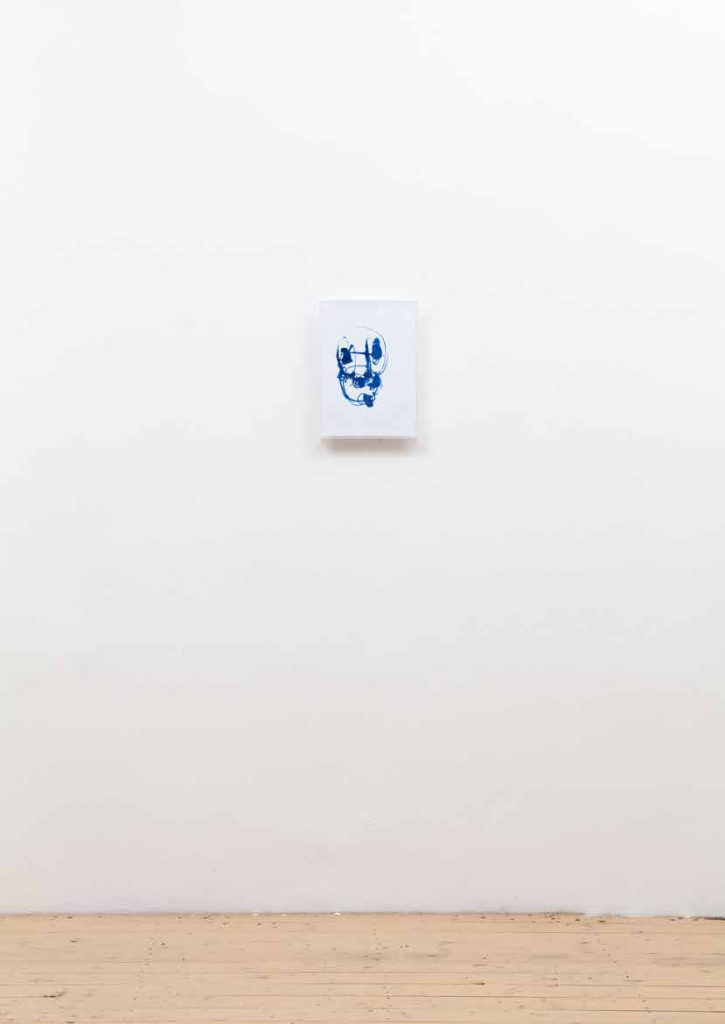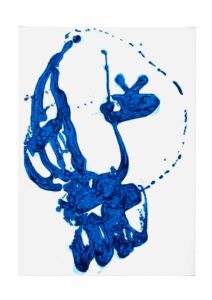2022 – BLU – Visionarea art space – Rome
BLU
Gianluca Marziani
On a defined semantic scale, some artists privilege the lowest variations by nature. It is a careful methodological approach that protects the creation from external “noises” by enclosing the gaze into the grammatic of its own perimeter. It preserves the syntactical focus, without distractions that could contaminate the sentient essence of the idea. For these artists, the painting becomes a fortified armor, a gravitational hyper-object that compress the energy load quantumly. It
is similar to an antimatter field that pushes on the concentrated mass until multiplicate the energy inside the single painting, as if every chromatic action was a cosmic core equipped with an irreplaceable source code.
Danilo Bucchi is the artist that the most inspires reflections on the metaphysical destiny of the painting, on the concept of modernity and persistence of the painted image, on how the painting can integrate in new digital profiles without dispersing its iconographical heritage, its methodical and handcrafted nature, its
privileged space in a market of endogenous transformations.
It exists a digital capitalism that is decentralizing the power’s systems, creating overlapped platforms composed of archipelagos without verticalisms and financial processes for new generations of users and buyers. This already real world changes the old roles, creating the ways to place the art in a liquid system. It is not about killing the painting and the manual languages, but it rather causes movements when managing the opera, when modulating the inputs and the outputs of the painting in the cognitive integrations between analogical grammar and digital syntaxis. In my opinion, Bucchi will continue to paint for a long and he will do it maintaining his minimum strategical variations inside an action cycle that will feed his own theoretical vision of the painting. At the same time, his semantic abilities have the linguistic spillover, a qualitative leap that connects a digital exoskeleton to the generative cycle of the manual skills. In practice, the subtractions and the fluid mark of Bucchi determine some minimum movements over time and, in this attitude, the manual origin unwittingly includes its digital opposite. This happens for a simple reason: the act of drawing freehand produces actions of iconographic skill, and corresponds with the basis of the digital native drawing. This happens because every informatic process, from the early HTML to date, was regulated by anthropomorphic principles, by a centrality of the human being that it created, in the image and likeness of the free painting, the first digital grammar for the native arts.
I immediately think about the “Goldberg Variations”, of Johann Sebastian Bach, the current best example to understand the ideal movement between an archetype (manual skill) and its developments (digital). The musical work is a modular design composed of 32 tracks, organized according to accurate symmetries and mathematical schemes. We should mention that Bach loved philosophy and astronomy and, by no coincidence, the variations seem to be terrestrial schemes that mix with cosmic resonances and esoteric echoes. Manual skills and digital coincide with the Bach’s sound system. They are two conditions of the linguistic use that looks for sense of belonging and mutual empathy, just like the music carpet of a compositor that, without knowing, already contained the destiny of the electronic music.
In my opinion, the painting will always be the most innovative and prophetical language of the creative knowledge. Its ecosystem contains the adaptation strategy for temporary habitats, always identifying targets and appropriate tools to reach that goal. For this reason, I bet the renovation of the painting into the same standard of the picture, a continuous parthenogenesis that will metabolize the flows of the progress. This standard is called DRAWING and its genetic code produces digital fibers that increase its spatiotemporal load. In a scenario that conforms with the progress, Bucchi chooses the opposite side and talks about reducing the uniqueness of the minimum variations, combining the clear revealing of the painting with the implicit substratum of his digital duplicate (the artist
can even no realize a digital painting but what matters is the value of the potential inside the track of the evidence).
Every painting is the transcription of a closed, personal code, that is non-fungible for nature. The imitations that pushed the market to the traceable awareness of the NFTs concern the incidents of the market, not the loss of essence of the original painting. Because inside the painting standards, it exists the genetic code
of a non-replicable line. It exists the cognitive soul that passes down the data of the gesture and the optic line of the author. The painting is still the not replicable uniqueness that feed the principle of distinctiveness, preciousness, exclusivity. A source code that feed itself with signs, matter, acts, color, surfaces… A code
that, nowadays, soars into the blue, painted in blue. The Danilo Bucchi’s blue.
There will be a preview, for VISIONAREA, of the painting cycle BLU. Major paintings that tell a significant innovation towards a deeply symbolic color, elaborated by paying a usual and accurate attention to the chromatic ritual and its engravings on the clear white of the bottom. A gestural conscience that deals with the rhythm and the balance of the scratch, catching liquid valences that only the blue can grasp and support with Mediterranean empathy. It moves through the abstractions of the sky and the crystalline brilliance of the water. It adds the mysterious mineral conscience of the alchemic blue with its unstable motion of the tonal valences, the gemological depths and the Luminist plays.
Blue forms that become autobiographical bodies of a timeless diary. Bodies that represent the liquid abstractions of a ritual in the cosmic white of the interior galaxy. Flowing and viscous paintings, appearances in the geography of the sidereal peak. Electric paintings in the cognitive system of a fetal thought of the painting.
The exhibition involves the audience thanks to its shapes, brought out by a shining and smooth blue. The Bucchi’s bodies are more and more diluted, as if to turn back to the archaic origin of graffiti, to the roots from which the scratch started to tell shared stories. That scratches on the white are the continuous filiation of
an artist who creates embryonic and motoric shapes, absorbed into their emotional and sentimental level, a diary mirror of the interior world that becomes a shared story.
Bucchi is an artist that faces the metaphysical ritual of the painting. He reveals the light sound of the details, the slow movement towards the embryonic sign. He uses an ascetic frequency that brings the figurative action out and guides the muscular asanas of the clear gesture in front of the white of a geography without margins. The Bucchi’s ritual is controlled, methodic up to scarification, like a sword that splits the air and slows down the movement. The pictorial result is really similar to the aikidō’s rules, the martial art where body and sword become the same muscular and plastic essence. The hand moves balancing speed and control,
creating shapes that include every theory of randomness. The graphological vertigo is like an oriental ideogram, where the hand acts like a katana and the result cuts through the ground of the white with deep and river engravings, so similar to rivers becoming traces of autobiographical bodies.
After facing the long breathing of the black scratch on the white bottoms, after introducing red arterial details among the fluctuations of the black marks, after looking at the total black, Danilo Bucchi finds again the geography of the white where the rivers of his chromatic twin flow: a mineral and boreal blue which slides
among the bights that broaden and shrink, among rivulets that spurt and compact the chromatic density, among elastic curves that remember the Planet from the sky but also the microcosm, invisible with the naked eye.
Danilo Bucchi proved himself to be a real uniqueness in the current pictorial scenery. His iconographic identity put him in a limbo that hybridizes the representation of his opposite and vice versa. In his liquid universe, the interpretation is not direct or univocal. It moves by slides or similarities in a semantic
context that identifies itself in its own aesthetic writing style, highlighting a self-referential process which always was the last objective of the great painting. In other worlds, it is the creation of an own world that spreads out in the exegetical codes of a divinatory look.
